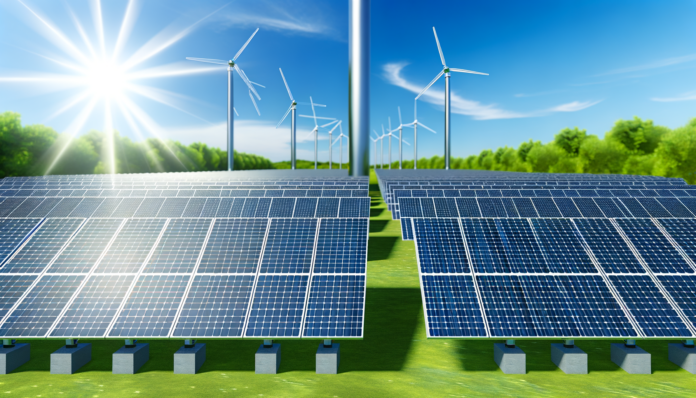Introduction to Solar Panel Technology
The Evolution of Solar Panels
Solar panel technology has come a long way since its inception in the mid-20th century. The first practical photovoltaic (PV) cell was developed in 1954 by Bell Laboratories, which had an efficiency of about 6%. These early solar panels were primarily used in space applications due to their high cost and limited efficiency. Over the decades, advancements in material science and manufacturing techniques have significantly improved the efficiency and affordability of solar panels.
In the 1970s and 1980s, the development of silicon-based solar cells became more prevalent, leading to the commercialization of solar panels for residential and commercial use. The efficiency of these panels gradually increased, reaching around 15% by the early 2000s. The introduction of thin-film solar cells in the 1990s provided a more flexible and lightweight alternative to traditional silicon panels, although they initially had lower efficiencies.
The 21st century has seen remarkable progress in solar panel technology. Innovations such as perovskite solar cells, bifacial panels, and quantum dot solar cells have pushed efficiency rates beyond 20%, with some experimental setups achieving over 25%. These advancements have made solar energy more accessible and cost-effective, driving widespread adoption across the globe.
Importance of Solar Energy in Modern Society
Solar energy plays a crucial role in addressing the global energy crisis and combating climate change. As a clean and renewable energy source, solar power helps reduce greenhouse gas emissions and dependence on fossil fuels. The widespread adoption of solar energy can significantly mitigate the adverse effects of climate change, such as rising temperatures, extreme weather events, and sea-level rise.
In addition to its environmental benefits, solar energy offers several economic advantages. The declining cost of solar panels and the availability of government incentives have made solar power an attractive option for homeowners, businesses, and utilities. Solar installations can lead to substantial savings on electricity bills and provide a reliable source of energy in remote or off-grid locations.
Moreover, the solar industry has become a significant driver of job creation and economic growth. According to the International Renewable Energy Agency (IRENA), the solar sector employed over 3.8 million people worldwide in 2020. As the demand for clean energy continues to grow, the solar industry is expected to generate even more employment opportunities and contribute to sustainable development.
Overview of Current Solar Panel Technologies
Today’s solar panel market offers a diverse range of technologies, each with its unique advantages and applications. The most common types of solar panels include:
- Monocrystalline Silicon Panels: These panels are made from single-crystal silicon and are known for their high efficiency and durability. They typically have efficiency rates between 15% and 20% and are widely used in residential and commercial installations.
- Polycrystalline Silicon Panels: Made from multiple silicon crystals, these panels are slightly less efficient than monocrystalline panels but are more affordable. Their efficiency ranges from 13% to 16%, making them a popular choice for budget-conscious consumers.
- Thin-Film Solar Panels: These panels are made by depositing thin layers of photovoltaic material onto a substrate. They are lightweight, flexible, and can be integrated into various surfaces, such as building facades and vehicles. However, their efficiency is generally lower, ranging from 10% to 12%.
- Perovskite Solar Cells: Perovskite materials have shown great promise in achieving high efficiency at a lower cost. Recent advancements have pushed their efficiency beyond 25%, and ongoing research aims to improve their stability and commercial viability.
- Bifacial Solar Panels: These panels can capture sunlight from both the front and back, increasing their overall energy output. They are particularly effective in environments with high albedo, such as snowy or reflective surfaces.
- Quantum Dot Solar Cells: Utilizing nanocrystals, these cells have the potential to achieve high efficiency by capturing a broader spectrum of sunlight. Although still in the experimental stage, they hold promise for future solar technologies.
In conclusion, the evolution of solar panel technology has been marked by significant advancements in efficiency, cost reduction, and material innovation. As solar energy becomes increasingly vital in addressing environmental and economic challenges, ongoing research and development will continue to drive the growth and adoption of this sustainable energy source.
Recent Breakthroughs in Solar Panel Efficiency
Advancements in Photovoltaic Cells
The efficiency of photovoltaic (PV) cells has seen remarkable improvements over the past few decades. Initially, solar panels had a conversion efficiency of around 10%, but modern advancements have pushed this figure to over 20%, with some experimental models even exceeding 25%. This leap in efficiency is largely due to innovations in materials and cell architecture. For instance, silicon heterojunction cells, which combine crystalline and amorphous silicon layers, have shown significant promise. These cells can capture a broader spectrum of sunlight, thereby enhancing overall efficiency. Additionally, tandem solar cells, which stack multiple layers of different materials, are being developed to further boost efficiency by capturing various wavelengths of light.
Perovskite Solar Cells
Perovskite solar cells have emerged as a game-changer in the solar industry due to their high efficiency and low production costs. Perovskites are a class of materials that have a unique crystal structure, allowing them to absorb a wide range of light wavelengths. Recent advancements have seen perovskite solar cells achieve efficiencies of over 25%, rivaling traditional silicon-based cells. Moreover, perovskite-silicon tandem cells have been developed, combining the strengths of both materials to achieve even higher efficiencies. Despite their potential, perovskite cells face challenges related to stability and scalability. However, ongoing research is focused on improving their durability and commercial viability, making them a promising candidate for the future of solar energy.
Bifacial Solar Panels
Bifacial solar panels represent a significant innovation by capturing sunlight from both the front and back of the panel. This design allows them to utilize reflected sunlight from surfaces such as the ground or water, thereby increasing their energy yield. Bifacial panels are particularly effective in environments with high albedo, such as snowy regions or areas with reflective surfaces. Recent advancements have improved their efficiency and durability, making them a viable option for large-scale solar farms and commercial installations. However, they do come with higher initial costs and require specialized mounting systems to maximize their dual-sided capabilities.
Quantum Dot Solar Cells
Quantum dot (QD) solar cells are at the forefront of next-generation solar technology. These cells use nanocrystals, known as quantum dots, which have unique electronic properties that can be tuned to absorb different wavelengths of light. This tunability allows QD solar cells to achieve high efficiencies and potentially lower production costs. Recent research has demonstrated QD solar cells with efficiencies exceeding 18%, and they have shown remarkable stability over long periods. The ability to manufacture QD cells using simple, low-cost processes further enhances their commercial appeal. As research continues to address challenges related to scalability and long-term stability, quantum dot solar cells hold significant promise for the future of solar energy.
Innovations in Solar Panel Design
Flexible and Lightweight Panels
The continuous advancements in materials and manufacturing techniques have paved the way for the emergence of flexible, thin, and lightweight solar panels. These innovative solar panels are designed to be adaptable, making them well-suited for a range of uses, from powering portable devices to seamlessly fitting onto curved surfaces.
MIT researchers have developed ultralight fabric solar cells, thinner than a human hair, that can be easily affixed to any surface, creating a material like solar sheets. Weighing one-hundredth of traditional solar panels, these PV cells produce 18 times more power-per-kilogram and are at the forefront of the latest solar panel technology developments.
The development of flexible and lightweight solar panels has transformed the utilization of renewable energy and revolutionized its integration into our daily lives. Their flexible nature allows for unconventional placements, including integration into clothing and backpacks, while their lightweight design enhances their installation potential on various structures such as vehicles, buildings, and even spacecraft. The ability to easily transport and deploy flexible solar sheets as a new technology is a significant advantage in remote and challenging environments where power sources are limited or non-existent. With their versatility and adaptability, these solar panels have become a game-changer in expanding the reach and accessibility of sustainable power generation.
Transparent Solar Panels
The advent of transparent solar panels has ushered in a new era of sustainable infrastructure, where windows and building facades can now generate electricity while preserving light transmission and visibility. These groundbreaking panels employ photovoltaic (PV) technology, allowing for seamless integration into architectural elements such as windows and building exteriors. By utilizing PV glass that maintains transparency, these panels serve a dual purpose – creating visually appealing structures while simultaneously generating renewable energy.
The integration of transparent solar panel technology offers a unique solution that blends functionality with aesthetics. By harnessing the power of the sun without obstructing natural light or impeding the view, these innovative panels enable structures to be both energy-producing and visually appealing. Whether incorporated into skyscrapers or residential buildings, transparent solar panels combine form and function, paving the way for a greener and more sustainable future.
Building-Integrated Photovoltaics (BIPV)
Building-Integrated Photovoltaics (BIPV) represent a significant leap forward in the integration of solar technology into everyday infrastructure. BIPV systems are designed to replace conventional building materials in parts of the building envelope such as the roof, skylights, or facades, seamlessly blending into the architecture while generating electricity. This dual functionality reduces the need for separate solar installations and building materials, thereby lowering overall costs and enhancing the aesthetic appeal of buildings.
Recent advancements in BIPV technology have focused on improving the efficiency and versatility of these systems. Innovations include the development of new materials and manufacturing processes that make BIPV more affordable and accessible. For instance, the use of thin-film solar cells in BIPV allows for greater flexibility in design and application, enabling architects to incorporate solar technology into a wider range of building styles and structures.
The benefits of BIPV extend beyond aesthetics and cost savings. By integrating solar panels directly into the building structure, BIPV systems can contribute to significant energy savings and reduce the building’s carbon footprint. Additionally, BIPV can enhance the thermal insulation of buildings, further improving energy efficiency. As the demand for sustainable building solutions continues to grow, BIPV is poised to play a crucial role in the future of green architecture and urban development.
Enhancing Durability and Longevity
Weather-Resistant Materials
Solar panels are often exposed to harsh environmental conditions, including extreme temperatures, high winds, and heavy precipitation. To ensure their longevity and consistent performance, the development of weather-resistant materials has become a focal point in solar technology. Modern solar panels are now constructed using advanced materials that can withstand these challenging conditions. For instance, the use of tempered glass and robust aluminum frames enhances the structural integrity of solar panels, making them more resistant to physical damage and environmental wear and tear. Additionally, the incorporation of anti-corrosive coatings helps protect the panels from moisture and salt, which is particularly beneficial for installations in coastal areas.
Self-Cleaning Technologies
One of the challenges in maintaining solar panel efficiency is the accumulation of dirt, dust, and other debris on their surfaces, which can significantly reduce their ability to capture sunlight. To address this issue, self-cleaning technologies have been developed. These technologies often involve hydrophobic and photocatalytic coatings that repel water and break down organic materials, respectively. When it rains, the hydrophobic coating ensures that water forms droplets that roll off the surface, taking dirt and dust with them. Photocatalytic coatings, on the other hand, use sunlight to trigger a chemical reaction that decomposes organic matter, keeping the panels clean and maximizing their efficiency with minimal maintenance.
Improved Thermal Management
Solar panels can become less efficient as they heat up, a phenomenon known as thermal degradation. To combat this, improved thermal management systems have been integrated into modern solar panel designs. These systems include advanced heat-dissipating materials and innovative cooling techniques. For example, some panels are now equipped with passive cooling systems that use natural convection to dissipate heat. Others employ active cooling methods, such as liquid cooling systems, which circulate a coolant to absorb and remove excess heat. By maintaining optimal operating temperatures, these thermal management solutions help ensure that solar panels operate at peak efficiency, even in hot climates.
In conclusion, the advancements in weather-resistant materials, self-cleaning technologies, and improved thermal management are pivotal in enhancing the durability and longevity of solar panels. These innovations not only protect the panels from environmental damage but also ensure they continue to operate efficiently over their lifespan, making solar energy a more reliable and sustainable option for the future.
Portability and Off-Grid Solutions
Portable Solar Chargers
Portable solar chargers have revolutionized the way we think about energy on the go. These compact devices are designed to harness solar energy and convert it into electricity, providing a convenient power source for small electronics such as smartphones, tablets, and cameras. The portability of these chargers makes them ideal for outdoor enthusiasts, travelers, and anyone who needs a reliable power source away from the grid.
Modern portable solar chargers are equipped with high-efficiency photovoltaic cells that can generate significant power even in low-light conditions. Many models come with built-in batteries, allowing users to store energy for later use. This feature is particularly useful during cloudy days or nighttime. Additionally, some advanced chargers offer multiple USB ports, enabling the simultaneous charging of several devices.
Foldable Solar Panels
Foldable solar panels represent a significant advancement in solar technology, combining efficiency with portability. These panels are designed to be lightweight and compact, making them easy to transport and deploy. When unfolded, they provide a substantial surface area for capturing sunlight, which translates into higher energy output.
Foldable solar panels are particularly popular among campers, hikers, and emergency responders. They can be easily attached to backpacks, tents, or vehicles, providing a versatile power solution in remote locations. The durability of these panels is another key feature; they are often made from robust materials that can withstand harsh environmental conditions.
Solar Generators
Solar generators are a comprehensive off-grid power solution, combining solar panels with energy storage and power management systems. These generators are designed to provide a reliable and sustainable power source for a variety of applications, from home backup systems to remote workstations and outdoor events.
A typical solar generator setup includes solar panels, a battery bank, an inverter, and a charge controller. The solar panels capture sunlight and convert it into electricity, which is then stored in the battery bank. The inverter converts the stored DC power into AC power, making it compatible with most household appliances and electronic devices. The charge controller ensures that the batteries are charged efficiently and safely.
Solar generators offer several advantages over traditional fuel-powered generators. They are silent, produce no emissions, and require minimal maintenance. Additionally, the cost of solar generators has decreased significantly in recent years, making them an affordable option for many users. With advancements in battery technology, modern solar generators can store more energy and provide power for extended periods, even during prolonged cloudy weather.
In conclusion, the advancements in portable and off-grid solar solutions have made solar energy more accessible and practical for a wide range of applications. Portable solar chargers, foldable solar panels, and solar generators are empowering individuals and communities to harness the power of the sun, reducing their reliance on traditional energy sources and promoting a more sustainable future.
Environmental and Economic Impact
Reducing Carbon Footprint
Solar panel technology plays a crucial role in reducing the global carbon footprint. By harnessing the power of the sun, solar panels generate electricity without emitting greenhouse gases, unlike traditional fossil fuel-based power plants. This shift to renewable energy sources is essential in combating climate change and reducing air pollution.
The adoption of solar energy significantly decreases the reliance on coal, oil, and natural gas, which are major contributors to carbon dioxide emissions. For instance, a typical residential solar panel system can offset approximately 3 to 4 tons of carbon emissions annually, equivalent to planting over 100 trees each year. On a larger scale, solar farms can prevent millions of tons of CO2 from entering the atmosphere, making a substantial impact on global efforts to mitigate climate change.
Cost-Effectiveness of Modern Solar Panels
The cost-effectiveness of modern solar panels has improved dramatically over the past few decades. Advances in technology have led to higher efficiency rates and lower production costs, making solar energy more accessible to a broader audience.
Today, the cost of solar panels has decreased by more than 70% since 2010, making it a competitive alternative to traditional energy sources. The levelized cost of electricity (LCOE) for solar power is now comparable to, or even lower than, that of fossil fuels in many regions. This economic advantage is driving the widespread adoption of solar energy across residential, commercial, and industrial sectors.
Moreover, the long-term financial benefits of solar panels are significant. Homeowners and businesses can save on electricity bills, and in many cases, excess energy generated can be sold back to the grid through net metering programs. This not only provides a return on investment but also contributes to energy independence and security.
Government Incentives and Policies
Government incentives and policies are pivotal in promoting the adoption of solar energy. Various countries have implemented measures to support the growth of the solar industry, recognizing its environmental and economic benefits.
In the United States, the federal Investment Tax Credit (ITC) allows homeowners and businesses to deduct a significant percentage of the cost of installing a solar energy system from their federal taxes. This incentive, along with state and local rebates, has made solar installations more affordable and attractive.
Similarly, in Europe, initiatives like the REPowerEU plan aim to increase solar capacity significantly by 2025. These policies provide financial support and create a favorable regulatory environment for solar energy projects.
In addition to financial incentives, governments are also setting ambitious renewable energy targets and implementing policies to phase out fossil fuels. These efforts are crucial in accelerating the transition to a sustainable energy future and ensuring that solar energy becomes a mainstream power source.
In conclusion, the environmental and economic impacts of solar panel technology are profound. By reducing carbon emissions, offering cost-effective energy solutions, and benefiting from supportive government policies, solar energy is poised to play a central role in the global transition to renewable energy.
Future Trends and Predictions
Next-Generation Solar Technologies
The future of solar energy is brimming with potential, thanks to the development of next-generation solar technologies. One of the most promising advancements is the use of **perovskite solar cells**. These cells offer a cheaper and more efficient alternative to traditional silicon cells, with the potential to dramatically increase the accessibility and efficiency of solar power. Researchers are also exploring **tandem cells**, which combine perovskite with silicon to achieve even higher efficiencies, potentially exceeding 35%.
Another exciting innovation is the development of **transparent solar panels**. These panels can be integrated into windows and glass surfaces, allowing buildings to generate electricity without compromising aesthetics. This technology is particularly promising for urban environments where space is limited.
**Floating solar farms** are also gaining traction. By installing solar panels on bodies of water, these farms save land space and benefit from the cooling effect of water, which can improve panel efficiency. Additionally, **solar skins**—customizable solar panels that blend seamlessly with their surroundings—are making solar installations more appealing for residential and commercial buildings.
Integration with Smart Grids
The integration of solar energy with **smart grids** is set to revolutionize how we manage and distribute electricity. Smart grids use advanced information and communication technologies to optimize the production, distribution, and consumption of electricity. By integrating solar power into these grids, we can enhance the efficiency and reliability of energy systems.
**Artificial Intelligence (AI)** plays a crucial role in this integration. AI algorithms can predict energy production and consumption patterns, enabling smarter energy management. For instance, AI can optimize the positioning of solar panels, predict maintenance needs, and balance supply and demand in real-time. This leads to improved performance and reduced operational costs.
Moreover, the rise of **decentralized solar power** systems, supported by smart grids, allows individuals and communities to generate, store, and trade energy locally. This fosters energy independence and resilience, reducing reliance on centralized power plants and enhancing the stability of the overall energy system.
Potential Challenges and Solutions
Despite the promising advancements, the solar energy sector faces several challenges. One significant issue is the **intermittent nature of solar power**. Solar energy production depends on weather conditions and daylight hours, which can lead to fluctuations in energy supply. To address this, advancements in **energy storage solutions** are crucial. Enhanced battery technologies, such as lithium-ion and flow batteries, are being developed to store excess solar energy for use during non-sunny periods.
Another challenge is the **initial cost of solar installations**. While the cost of solar panels has decreased significantly, the upfront investment can still be a barrier for many. Government incentives and policies, such as tax credits and feed-in tariffs, play a vital role in making solar energy more affordable. Continued policy support is essential to drive further adoption.
**Durability and longevity** of solar panels are also concerns. Panels must withstand harsh weather conditions and maintain efficiency over time. Innovations in weather-resistant materials and self-cleaning technologies are helping to enhance the durability and lifespan of solar panels.
In conclusion, the future of solar energy is bright, with next-generation technologies, smart grid integration, and innovative solutions addressing current challenges. As we continue to advance, solar power will play an increasingly vital role in our transition to a sustainable and renewable energy future.






